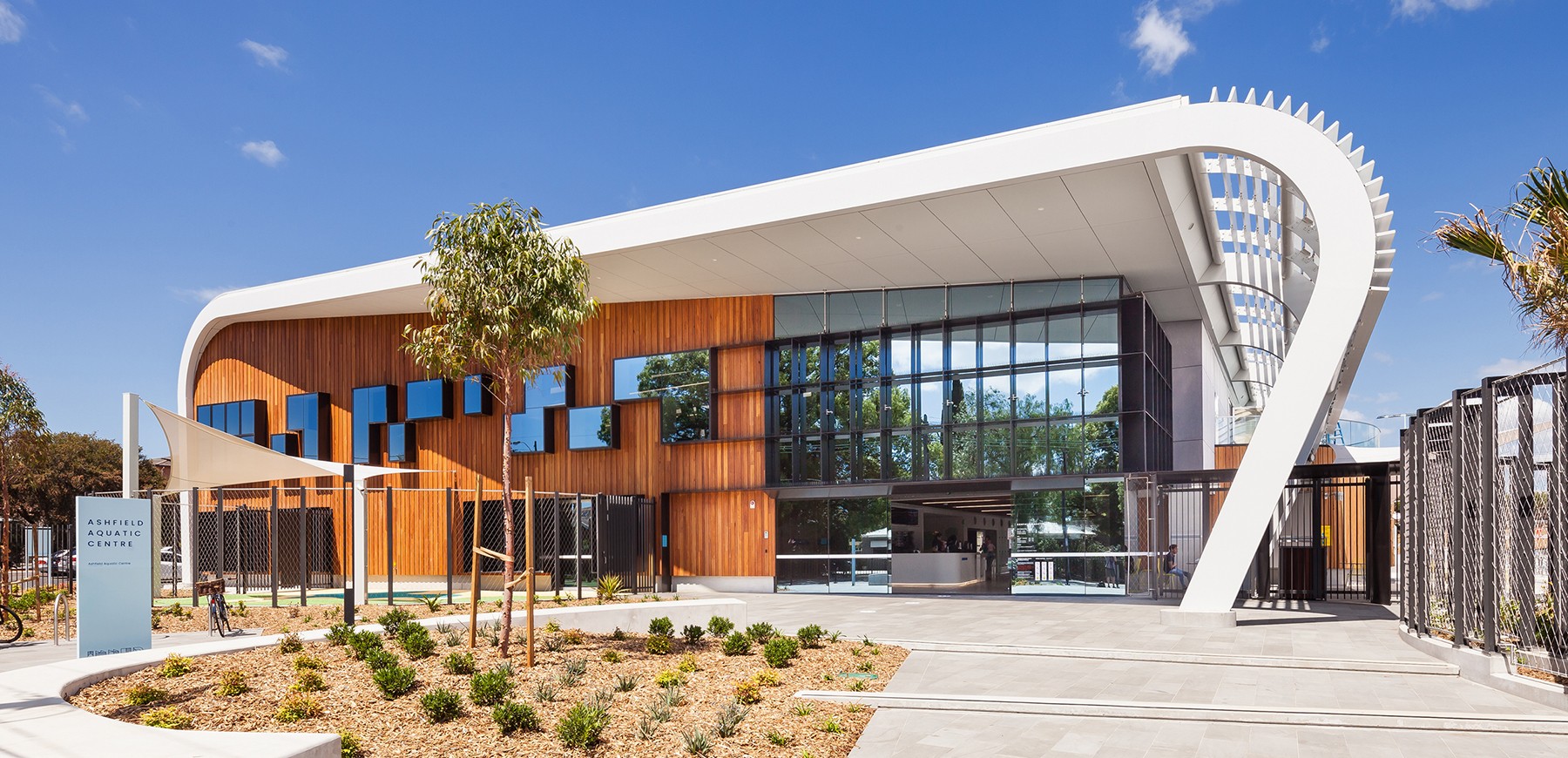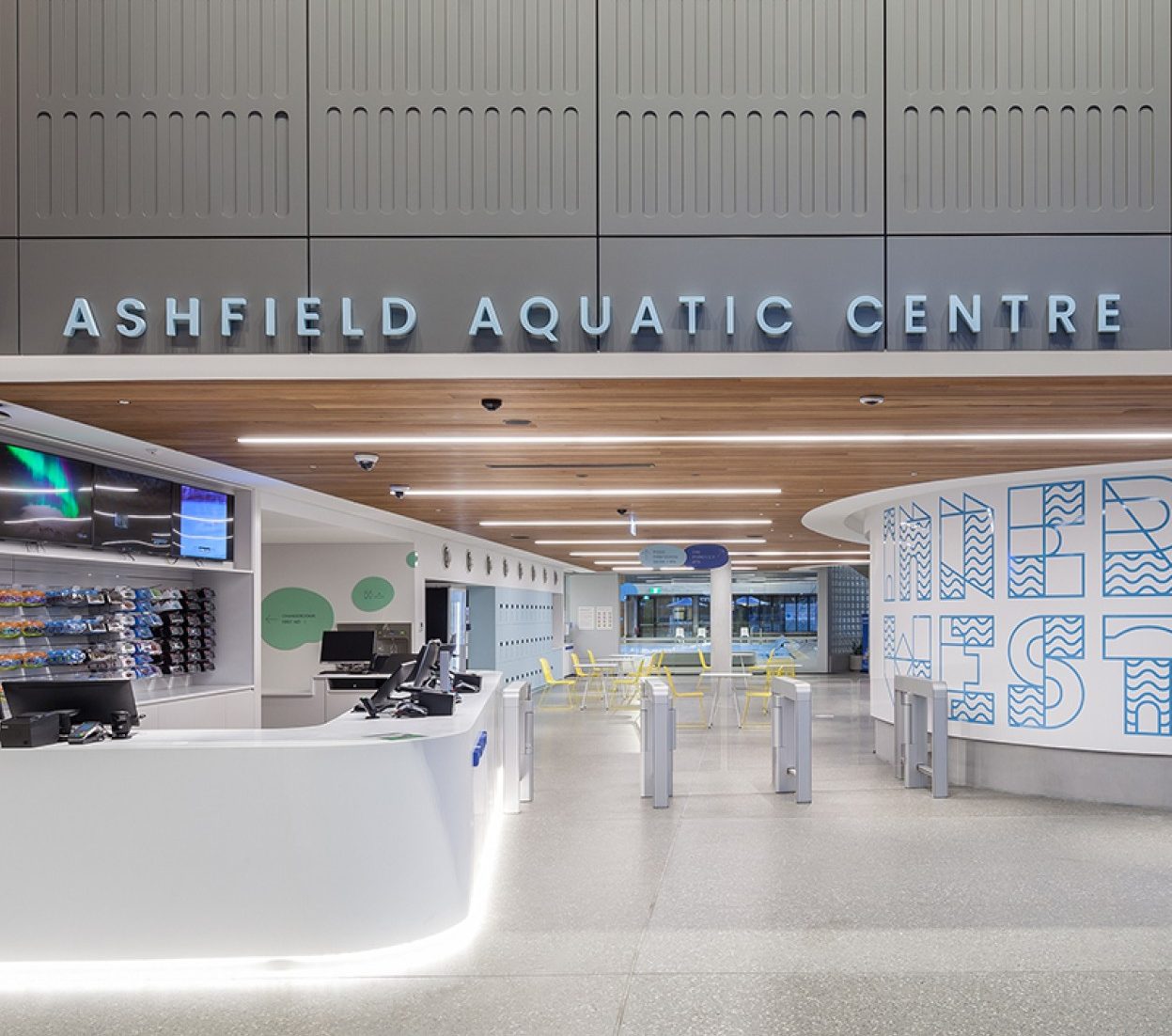Places where people could (safely) interact, feel a sense of community and enjoy moments of ‘normalcy’ became elevated in their importance: parks, playgrounds, swimming pools.
Splashing Out
Local aquatic centres have an element of nostalgia to them; icy poles melting in the sun; burning feet as you run to dive-bomb in the deep end, the overpowering aroma of Eau de Chlorine. But these spaces are evolving. Think: less concrete pool-blocks, more community hubs and state-of-the-art facilities, in line with modern day requirements and recreation.
Visit a public pool on any given day and you’ll see an incredible cross-section of the community. There are babies learning to swim, kids being schooled on their overarm techniques, teenagers with their swimming squads, adults getting their laps in, octogenarians undertaking rigorous aqua aerobics classes. It’s the ideal intergenerational melting pot, where health and connection converge.
History remade in Ashfield
There’s no better example of this than the $44.7 million Ashfield Aquatic Centre overhaul, delivered by FDC. The facility shut its doors in 2017 for a full refurbishment after 55 years of service and reopened at the end of last year, completely reimagined.
Set to attract around half-a-million visitors annually, the new centre houses four indoor and outdoor pools, a spa, sauna, steam room, gym and café, with cutting edge features that will future proof it for many years to come. There’s a water polo pool with a floor that can be lowered from flat to 2.1 metres, allowing activities for children and wheelchair users. There’s a landscaped children’s leisure pool, complete with lush green wall; community meeting rooms and green open space with covered seating.
The centre is also home to a new public artwork made from powder-coated metal louvres by internationally renowned artist and Inner-West local, Georgia Hill. It tells the story of the site, it’s place in culture and history, and the importance of its surrounding environment.
Historian Ann O’Connell knows a thing or two about that, having recently co-written and subsequently published a book about the pool’s history called Taking the Plunge: The History of Ashfield’s Pool 1963 to 2018.[1] She says the old Ashfield pool, which opened on the same site in 1963, had up to four generations of families pass through the swim club and take lessons from long-time coach Warwick Webster, an Olympian and former world record holder.
In its new form? It will continue to attract visitors – from local and abroad, from young to old. Icy poles may still melt in the sun, and the scent of chlorine still lingers. But there’s greenery where once there was just concrete. There’s tech that enhances the swimming experience. There are community hubs where before there was just a concrete pool block, ensuring it will serve and delight, add value to the community, spark conversations and instil connections, for many generations to come.



